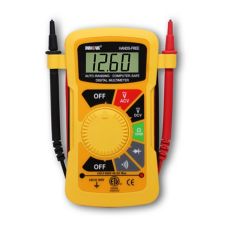Dooman, I am wondering if you can help me a little more. I tried your procedure to test the voltage drop. I set my multimeter up as you described as an alternate path from the positive battery terminal to the positive connection on the starter. Without hitting the start button my MM already was reading 13.25. This made me nervous that I was doing it wrong and so I disconnected it without hitting the button.
My MM is an Innova 3300 and I have it set to "10 megOhm Input Impedence, at the setting of 20. Is that right?
Innova 3300 Digital Multimeter can safely and accurately troubleshoot a variety of automotive and household electrical problems | Canadian Tire

www.canadiantire.ca





